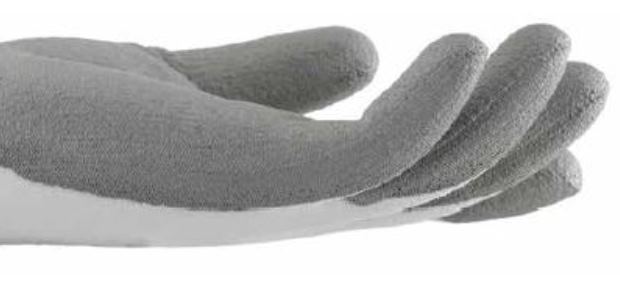
Gloves Are PPE and More
They actually help us work faster and better, thanks to amazing new designs and materials.
- By Joe Milot III, Anthony Di Giovanni
- Nov 01, 2014
We often think of gloves as…well, just gloves. But they're more than that. Gloves have become one of the most important pieces of PPE that one can wear on the job. Typically, they help protect our hands against scrapes and scratches. More specialized gloves help protect us from cuts and others against chemicals or contaminants. But gloves are much more than that: They actually help us work faster and better, thanks to amazing new designs and materials.
Before going further, let’s take some time to review gloves and what they're all about.
First, you have three basic glove technologies: seamless knit, polymer, and cut and sewn. Some may argue that there are more, but for simplicity we've divided them into three types. Each has very commonly important features that a user will need to do the job. However, it is important that users consult with hand protection specialists to consider all factors and determine which glove will do the best job.
Intuitively, one would be tempted to choose gloves solely by technology, but that would be too easy. The real determining factor to start with is risk/hazard assessment in light of clear objectives. It is important that all factors be considered because there are so many gloves available that there is a likelihood a glove can be found that protects and also actually makes people work better and faster.
Let's take a few minutes to understand some glove basics: Gloves begin with a liner. The liner is the form and support body for any coatings or reinforcements. With the exception of disposable gloves and some chemical gloves, most gloves are of the supported type. Some are coated or dipped for enhanced grip or resistance to liquid or chemicals.
Choosing the Right Glove
As we mentioned, any glove selection process should begin with an assessment of the risk/hazard factors. An overwhelming number of manual jobs involve material and parts handling or operation of heavy equipment, and the most common risks are contact with sharp edges or heavy abrasive areas. Seamless knit technology gloves have become the glove of choice for applications associated with this type of job. For the purposes of this article, we will concentrate on cut-resistant seamless knit gloves because they are so often misunderstood.
Too many times, we get caught up with levels of protection and ANSI vs. EN standards. While it is important that we understand this, it does not make selection any easier. What is most critical is understanding the users' particular situation so that they can feel comfortable with the decision they are making. Basic questions such as: Is the risk of cut from something razor sharp or rougher edged? Followed by: Is the contact potential a light brushing or one with pressing force? A high cut level may help protect you from a razor-sharp edge, but it has less relevance to the force of contact. Liner density or gauge will do more for this.
If we choose a glove with a high density or gauge, they will be comprised of a higher count per inch of thinner yarns. Lower density or lower gauge gloves contain fewer yarns per inch, but with yarns that are significantly thicker. That extra thickness will help when the force of the cutting edge is higher. It also helps in preventing abrasion cuts on rough-edged, heavier items.
But There is More
Grip and fit are just as important as the glove material, cut level performance, and density. Grip is a bit of a double-edged sword. On one hand, it helps to grasp and securely position sharp objects during handling. This helps to prevent items from slipping and slashing hands. However, all coatings will slice easily when in contact with razor-sharp edges. Once sliced, the edge will quickly come in contact with yarns that are now embedded and unable to move or roll with the cutting edge. The result is actually less cut resistance.
So what does this all mean? It means that it is important to choose the right grip that is compatible with the material and conditions you are working with so there is no slipping. Choosing the right liner/grip combination will not only provide better protection, but also likely improved productivity because parts are handled more securely, quickly, and with better dexterity than bare hands.
All of the benefits described above disappear if the fit is not right. Too tight, and the yarns of the liner will dangerously separate when clenching. This may expose skin to a razor-sharp edge. Too loose, and the glove is now working against you. While it may not slip at the interface of the glove and item being handled, it will most certainly shift at the hand/ glove interface, not to mention potentially becoming snagged on sharp or abrasive edges.
Often Overlooked
Contusions are a kind of close wound caused by blunt force trauma to the skin. Liner density and coating may not be enough to protect the hand. This is where TPR (Thermo Plastic Rubber) reinforcements are useful. More and more seamless knit gloves are offering TPR as added protection when there is risk of impact-related injuries on the fingers, knuckles, or the back of the hand.
It is obvious that cut protection is more than just about cut level; it's about understanding the risk and matching it to the right glove type. This is the reason for taking the time with a hand protection specialist to properly assess the type of protection that is best suited for your job.
This article originally appeared in the November 2014 issue of Occupational Health & Safety.